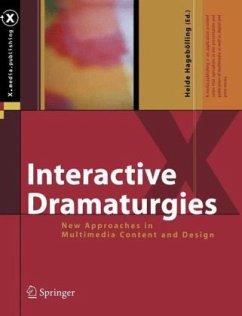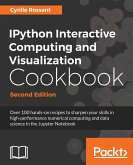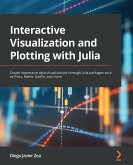Interactive media allow and at the same time require new forms of dramaturgy. Heide Hagebölling develops a new understanding of dramaturgy - so called "Interactive Dramaturgy" or "Expanded Dramaturgy", partly inspired by Gene Youngbloods "Expanded Cinema". A collection of contributions by international multimedia authors, designers, and artists outline concepts and strategies. Outstanding examples of media projects are analyzed, covering a broad range of both applications and genres: culture, art, film, museum, games, TV, and education. Interactive dramaturgies go beyond the well established term of interactive storytelling. The roles and required competences of both authors and users change. Interactive media are complex and consist of multiple dimensions. The user is actively involved, can switch between roles and chooses viewpoints, thus exploring stories and plots that are split up into segments. A linear dramaturgy that culminates in one concrete climax, therefore, no longer holds. The global connection of users via Internet fosters further dimensions of exchange and competition, and allow e.g. cooperative authoring or intercultural learning. Interactive dramaturgies carefully define and create the rules and dimensions of an open single- or multi-user environment. Adequate design of transition points between different segments, levels, and viewpoints are crucial for the quality of the underlying concept. Multimedia, real and virtual elements, concepts like augmented reality and intelligent rooms must be carefully integrated within a concrete media application or installation. Interactive dramaturgies help design and create environments and content that lead to immersion, active exploration and knowledge acquisition, and that ideally motivate users to repeated visits.
Bitte wählen Sie Ihr Anliegen aus.
Rechnungen
Retourenschein anfordern
Bestellstatus
Storno








